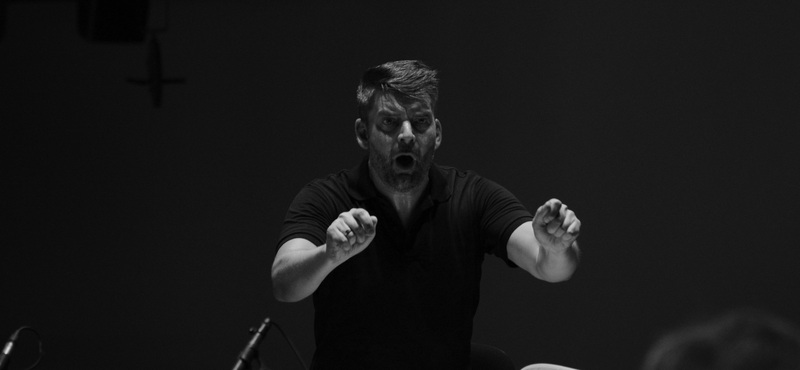The National Symphony Orchestra of Ukraine

Review: The National Symphony Orchestra of Ukraine
With the impeachment drama mostly behind us now, the appearance yesterday of the National Symphony Orchestra of Ukraine at George Mason University lacked the ironic timeliness it might’ve had last year. But there was still a large crowd, many of whom were not regular concert-goers, applauding between each movement of the two symphonies performed (Schubert’s “Unfinished” and the Brahms Third).
NSOU conductor Volodymyr Sirenko has led this ensemble for over 20 years now. On a single impression, I fear that routine may be creeping in. The orchestra is of middling technical standards, but surely could play with more fire and polish if it had more demanding leadership. Sirenko seemed to do little more than beat time; with his eyes often glued to the score, he reacted to the music rather than anticipating it, and phrasing was hard to discern. Worst of all, he was indifferent to balances, letting the winds and brass cover up important string lines regularly. A comparison of the musicians onstage with the printed orchestra roster showed that over a third of the NSOU string players stayed home, which should have called for extra care on the podium. And the strings Sirenko did bring were something of a disappointment. I was expecting, from a country that produced legendary names like Mischa Elman, Nathan Milstein, Leonid Kogan, and David and Igor Oistrakh, to hear a string section of surging, vibrant colors, but here there was little cohesion, with several players barely troubling to use vibrato.
The wind section was somewhat better, if insensitive to balance. The principal flute and clarinet players had very nice solo turns in “Novella” by Yevhen Stankovych – a Ukrainian composer new to me, but pleasing and attractive in the manner of Dmitri Kabalevsky or Samuel Barber. Otherwise, though there were some poorly-tuned chords now and then, the individual lines were all firm and musical.
Cellist Natalia Khoma (a Ukrainian artist now teaching in Charleston) delivered Tchaikovsky’s “Rococo Variations” with mixed results. Though solid in all of the virtuoso passages, she had a restricted range of expression and unreliable intonation. The slow third variation was the highlight -- imaginative phrasing and balletic ebb and flow – but elsewhere she seemed to be playing more for herself than for us. Here, though, I will praise Sirenko, who accompanied his soloist with close sensitivity.
But the two symphonies were a clabbered journey, with sustained notes in the brass burying everything else. Sirenko left so much obscured, it is hard to really talk about what remained. A few nice wind solos shone fitfully through, but the sweep of Brahms narrative, which requires every voice to play a part, was lost.
Carping aside, this visit seemed to be well-received, with the orchestra delivering two Ukrainian encores that had a few in the audience humming along.
Pictured at top: Natalia Khoma





